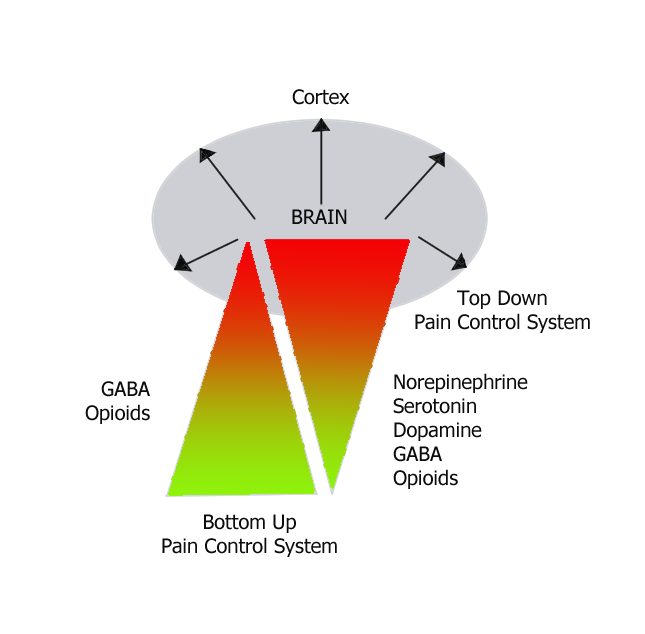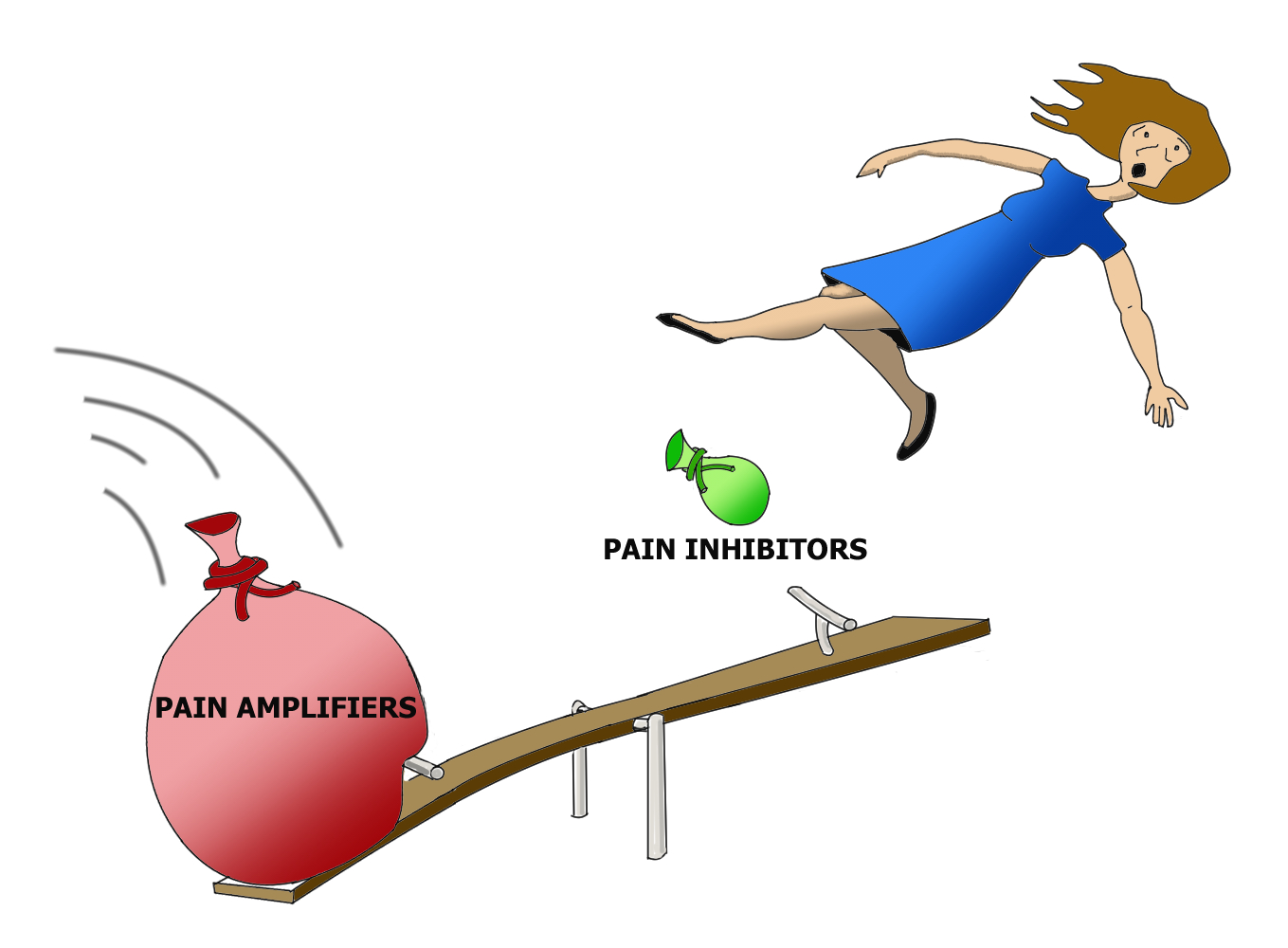Possible Causes
Central Nervous System
Regardless of whether a signal is transmitting information about your digestive system, an injury, or soothing touch, the instant it enters the spinal cord it’s in the central nervous system (CNS). There are processes within the cord, the brainstem (the structure at the top of the cord), and the brain that can modulate the signal before it reaches the conscious level of your brain’s cortex (the outer most structure).

Your body has two pain-inhibitory systems that work simultaneously: the Bottom-Up and Top-Down controls. The Bottom-Up system works like a filter in the cord to tone down the noxious transmissions traveling upwards to the brain. In the Top-Down system, the brain and brainstem send signals down into the cord to diminish the impact of the incoming noxious transmissions.
Both pain-relieving systems rely on chemical messengers, but many are in short supply. Most of the known imbalances work to tilt the scales to magnify pain, while others are thought to be products of a pain control system that has run afoul.
Chemical Imbalances
Regardless of where the pain control malfunctions occur, there are numerous chemical imbalances in the CNS that promote the amplification and persistence of pain. In fact, it would be impossible for a person to be pain-free with so many chemical abnormalities.
The nervous system releases chemicals (called neurotransmitters) that relay signals from one neuron to the next. Ideally, the pain-promoters should balance out the pain-relievers. Yet, the quantity of substances that work to increase pain substantially outweigh those that temper this awful sensation in people with fibromyalgia. So, if you ache all over as though your body has been flung off a seesaw, there are plenty of reasons for this!
The known chemical imbalances help lay the groundwork for understanding what is going on inside your CNS. Most of your chemical abnormalities are involved in pain control, but many are linked to sleep disruption, brain fog, fatigue, and an altered stress/exercise response. Of all the articles on possible causes, this is the most essential to read because it helps explain treatment strategies. Learn more.

The chemical changes that occur in fibromyalgia provide a window into your CNS malfunctions, but it’s not clear as to how or why they develop in the first place. However, given what is known about how the CNS should process incoming transmissions, several alterations are suspected to occur. Below are links to additional articles that describe many CNS malfunctions and identify various treatments to help correct them.
Neurons Switch Function: Neurons are not hard-wired to only work one way. Depending upon the situation, they can change how they operate, and it appears some of your CNS neurons have tossed out the “User’s Manual.” Learn more.
Cord Mishaps: Your spinal cord should tone down the number of noxious signals, yet research shows that your brain is overwhelmed. In addition, spinal neurons control balance, but your coordinated movement is impaired … leading to perceptions of clumsiness. Learn more.
Brainstem Overload: This structure at the top of the cord should release an arsenal of pain-soothing chemicals to control your discomfort. Problems in the brainstem may also explain why your sleep is disrupted and your stress level seems out of control. Learn more.
Chaos in the Brain: The brain is designed to multitask by operating in an efficient and coordinated fashion. However, studies show your brain centers are overworked and underperforming. Learn more.
Dopamine – The Missing Link: A painful stimulus or a cognitive task should cause certain brain areas to pour out dopamine, but this does not happen in fibromyalgia patients. Learn more.
Immune Cells – Friend or Foe? Until recently, the neurons were the focus of all studies on fibromyalgia. Now researchers are discovering that immune cells in the CNS (called glia) may be an important key to causing your symptoms. Learn more.
Gray Matter Loss: Multiple studies show loss of gray matter, yet you don’t have a degenerative brain disease like Alzheimer’s. So, what could be causing it and what does this mean for you? Learn more.
Brain-Cord Disconnect: Ultimately, the brain is boss over the operation of the brainstem and cord. If the brain needs pain-relief, these lower centers ordinarily deliver what the brain expects, but this process may not happen in fibromyalgia. Learn more.
Sleep Disturbances: Sleep disorders are prevalent in fibromyalgia and research shows that any interference with sleep will impair the function of the pain inhibitory system. Nightly disruptions also activate your glia cells, making matters worse. Learn more.
